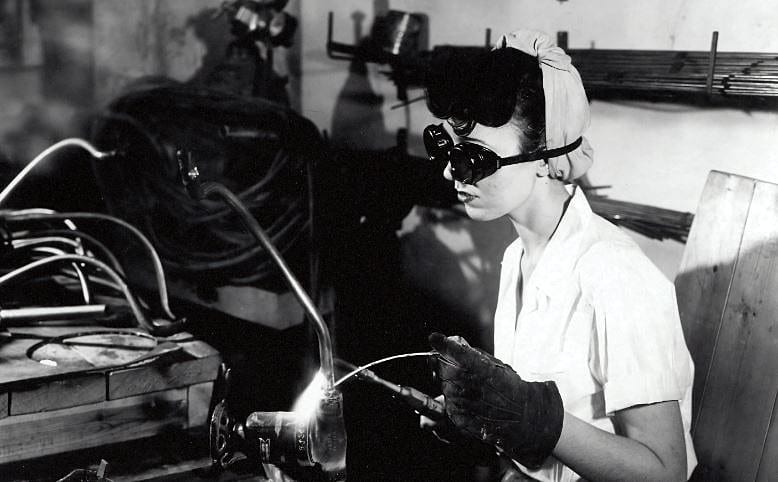The novelty of using crowdsourcing for innovation is not a new one. In fact, a few years back, one of Crowdsourcing Week’s own featured writers, Marcus Barber, talked about how the future of manufacturing was upon us, and that crowdsourcing could potentially be a huge part of it. By tapping into the knowledge of people outside their niche, companies are able to come up with more creative solutions, receive help, or even aid other industries to reach a breakthrough.
For the manufacturing industry, however, crowdsourcing was not something that people did until recently. But its benefits are no less incredible. Here are five big ways crowdsourcing has helped, and can help, manufacturers innovate.
Resolving Difficult Problems
If a problem has stumped your business and no one in-house has thought of a viable solution, it may be a good idea to crowdsource for answers. Recently, NASA, in partnership with crowdsource solutions provider HeroX, launched the “Lunar Loo” project. The objective is to manufacture a lunar restroom as part of its Artemis program to return astronauts to the moon. The designs must be light, energy saving, and easy to maintain. The top three designs will get $35,000 (£27,894) in prizes. Your business could issue a similar challenge. In fact, manufacturers like Forsac, ArcelorMittal, and Celsa have been crowdsourcing solutions to solve complex challenges plaguing their production lines for years.
Reducing Delivery Costs
From the gas that trucks use in heavy traffic to the time it takes to get to their destination, it is no secret that delivery operations cost a lot of time and money. Fortunately, some of the earliest applications of crowdsourced technology let you get your products from point-to-point more efficiently and, by extension, more cheaply.
 For example, GPS navigation apps like Navitel, Yandex, and OsmAnd gather traffic information from crowdsourced transit data, helping truck drivers avoid most bottlenecks. Other modern GPS tools such as quadcopters are also a product of crowdsourced solutions over the years.
For example, GPS navigation apps like Navitel, Yandex, and OsmAnd gather traffic information from crowdsourced transit data, helping truck drivers avoid most bottlenecks. Other modern GPS tools such as quadcopters are also a product of crowdsourced solutions over the years.
Innovating Product Designs
Much like the discovery of a new cure, crowdsourcing can also be used to produce new inventions. But it was not easy for people to submit their ideas back then. Now, platforms allow designers and manufacturers to view and edit PCB designs straight from a web browser, eliminating the need for specialist software and opening the process to a larger group of people. By using certain technologies like cloud and collaborative software, the common user can freely introduce new designs and optimise existing ones, too. Automobile manufacturer Polaris, for example, has an open-innovation platform that allows people to submit ideas, which they will turn into award-winning products. Ideas like the three-wheeled motorcycle Slingshot and the first electric motorcycle were given life because of crowdsourced ideas.
Conducting Market Research
If manufacturers can crowdsource for ideas, then the opposite is also true. When you have products that you want to get feedback on before they get released commercially, then you can crowdsource opinions to see what can be improved. It can also give you an idea of how well it is going to be received. This can be as simple as using tools like SurveyMonkey or looking into commercial crowdsourcing companies like CrowdTap. The latter offers to put up your opinions, ideas, and more to its users (who are incentivised to answer) so they can provide feedback. Unfortunately, it is only available in the US at the moment, but the company is looking to expand to more countries soon.
Testing Customer Traction
Do you have a product idea but aren’t sure if anyone is going to buy it? You can test customer demand by gauging their willingness to pay for the product. While conducting market research is one method, another way is to simply crowdfund your innovations. Many businesses, from startups to major corporations, use reward crowdfunding to test initial customer demand for new products. Under an “All or Nothing” model, a business can set a minimum order level before it guarantees to make delivery. This means it can do the math to go in to production only if the number of orders meet a pre-set target.
For a startup, it means they avoid running up debt to produce goods not enough people want. While major companies can test sales of limited runs before gearing up for major distribution. For instance, Sony is crowdfunding a wearable air conditioner that fits into the back of your shirt, currently priced at ¥12,760 (£94.91). Plenty of other manufacturers like Pebble Technology, Peak Design, and LH Labs have also done this. Not only is crowdfunding a cost-effective way to create new products, but it also ensures that there is an eager market for it when it is released.
From innovation product design to conducting market research, crowdsourcing provides manufacturers with a way to think outside the box. There is a wealth of talent and information out there. You only need to reach out.






0 Comments